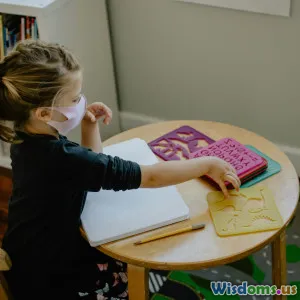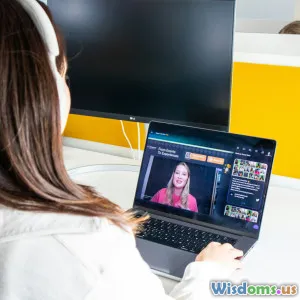
How ProjectBased Learning Prepares Students for Real World Careers
8 min read Explore how project-based learning equips students with essential skills for real-world careers through hands-on experience, collaboration, and problem-solving. (0 Reviews)
How Project-Based Learning Prepares Students for Real-World Careers
Introduction
In today’s fast-evolving job market, students need more than just theoretical knowledge—they require practical skills, adaptability, and a mindset geared toward innovation. Traditional education methods often lag behind in delivering these crucial competencies. Enter project-based learning (PBL), an educational approach that immerses students in real-world problems and collaborative projects, allowing them to develop not only knowledge but also the skills essential for thriving careers. But what exactly makes PBL so effective at preparing students for the complexities of modern work environments? This article explores how PBL bridges the gap between classroom learning and real-world career demands.
What Is Project-Based Learning?
Project-Based Learning is an instructional methodology where students learn by actively engaging in projects that address authentic problems or questions. Instead of passively absorbing information, learners become investigators, designers, and collaborators.
Unlike traditional assignments, PBL emphasizes:
- Interdisciplinary application: Combining subjects like science, technology, arts, and humanities.
- Problem-solving: Tackling complex issues without predefined answers.
- Collaboration: Working in teams to simulate workplace environments.
- Presentation: Communicating findings to real audiences, enhancing public speaking and persuasion skills.
According to the Buck Institute for Education, schools adopting PBL see a measurable increase in student engagement and academic achievement, with students reporting deeper understanding and greater retention of material.
Development of Critical 21st-Century Skills
1. Enhancing Collaboration and Communication
In the modern workforce, few jobs are truly solitary. According to a 2020 report by the World Economic Forum, 92% of employers value teamwork and interpersonal skills. PBL requires students to work in diverse groups, honing communication and conflict resolution skills. For example, a group project in a high school engineering class where students collaboratively design and build a prototype lamp teaches them not just the physics behind electricity but also how to delegate responsibilities, compromise on design decisions, and pitch their ideas to teachers or community stakeholders.
2. Fostering Critical Thinking and Problem-Solving
Real-world problems are rarely straightforward. PBL’s focus on authentic challenges compels students to analyze complex information and develop innovative solutions. Consider a university environmental science course engaging students in a community water quality assessment. Students must design experiments, collect data, interpret results, and suggest actionable recommendations. This mirrors tasks environmental professionals face and enhances critical thinking beyond rote memorization.
3. Building Adaptability and Resilience
Modern careers demand flexibility amidst constant change. PBL involves unpredictable elements like shifting team dynamics or project constraints, teaching resilience. When unforeseen challenges arise during a project—such as malfunctioning equipment or last-minute changes—students learn to adapt quickly. For instance, during a COVID-19 pandemic-inspired health education project, students shifted from in-person to virtual collaboration platforms, mirroring rapid digital adaptation required in many industries.
4. Enhancing Technical and Digital Literacy
Many PBL activities integrate current technologies, from coding and data analysis to multimedia presentations. This hands-on technology use builds digital competency essential in fields such as information technology, marketing, and engineering. Schools utilizing PBL report increased student proficiency in tech tools—from basic spreadsheets to complex CAD software—giving them a competitive career edge.
Real-World Examples of PBL Driving Career Readiness
High School Aerospace Engineering Programs
Some technical high schools collaborate with aerospace companies like Boeing to develop project-based curricula. Students may design a drone prototype, evaluating aerodynamics and electronics. This experience builds real engineering skills, as reported by the Massachusetts STEM Collaboratives.
Higher Education and Internships Combined with PBL
Institutions like Stanford incorporate PBL into design thinking courses, pairing class projects with internships where students solve company challenges. When pharmacy students at the University of Alberta undertook projects on patient medication adherence, they gained insights that shaped actual healthcare strategies.
International Institutes and Entrepreneurship
In developing countries, NGOs and educational institutes use PBL to foster entrepreneurship among youth. For example, in Kenya, students develop microbusiness projects that require budgeting, marketing, and customer research—all vital career skills promoting economic development.
The Role of Assessments in PBL
Evaluating student success in PBL goes beyond tests; it involves performance-based assessments such as:
- Portfolios of work completed.
- Reflective journals assessing learning processes.
- Presentations judged by external experts.
This comprehensive evaluation simulates workplace feedback cycles, emphasizing continuous improvement and professional communication.
Challenges and Mitigations
While PBL is powerful, it is not without challenges:
- Teacher Preparedness: Educators need training to design and manage complex projects.
- Resource Intensity: PBL often requires more materials, time, and collaboration spaces.
- Student Adjustment: Some students accustomed to traditional instruction may initially struggle.
These can be addressed through professional development, strategic planning, and scaffolding student collaboration skills gradually.
Conclusion
Project-Based Learning is more than just an educational trend; it is an essential strategy that aligns schooling with the realities of today’s and tomorrow’s careers. By immersing students in hands-on, meaningful projects, PBL nurtures versatile skill sets—critical thinking, teamwork, adaptability, and digital literacy—that employers increasingly demand.
As economies and technologies evolve, the ability to navigate complex problems collaboratively becomes paramount. Integrating PBL across all levels of education holds the promise of not only better academic performance but a future workforce ready to innovate, lead, and succeed in an unpredictable world.
Educators, policymakers, and parents should champion project-based learning to empower students beyond exams, preparing them genuinely for life and work.
By embracing the power of project-based learning, we cultivate not just graduates, but problem-solvers and creators ready for real-world challenges.
Rate the Post
User Reviews
Popular Posts

















